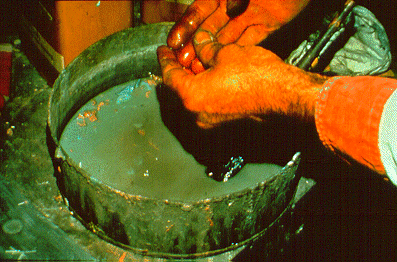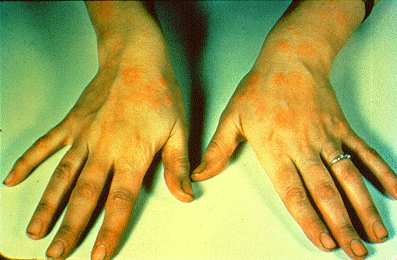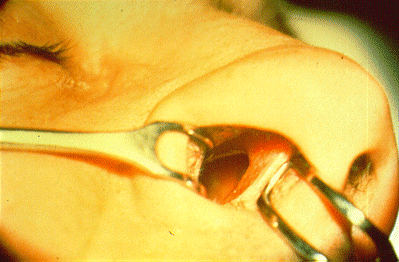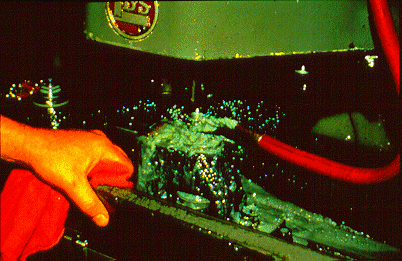Slides 36 to 40
Slide 36 - Solvent, poor work practice

Workers often acquire the bad habit of washing their hands in the same solvent used to clean tools and brushes contaminated with a resin and catalyst. This not only exposes the skin to the irritant action of the solvent, but also to the additive effects of the dissolved chemicals.
Slide 37 - Solvent, nummular eczema

Organic solvents are among the most frequently used substance in industry. Repeated skin contact leads to excessive dehydration of surface keratin and eczema. In this worker, who habitually used an organic solvent for cleansing purposes, the dermatitis appears as scattered, coin shaped concentrated patches, commonly referred to as "nummular" eczema.
Slide 38 - Chrome hole, fingers

Chromic acid and alkaline chromate are agents commonly encountered in the tanning and electroplating industries. These substances have a corrosive action when they enter the skin through a minor nick or break in the integument. This results in the formation of chronic, ulcerative lesions known as "chrome holes". Typically, the lesions are found on fingers, hands or forearms. "Chrome holes" also occur on the dorsal surfaces of the feet when chrome salts have been allowed to permeate boots or shoes. The lesions are usually painless and persist for many months before spontaneously healing with permanent atrophic scar. Identical lesions can also be produced by arsenic or zinc salts but these are less frequently encountered.
Slide 39 - Chrome hole, nasal

When chrome containing materials are present as aerosols, painless ulceration of the nasal mucosa and septum may occur. With continues exposure permanent septal perforation eventually results, as in this young woman who was employed in chrome plating small appliance parts.
Slide 40 - Cutting fluids

Cutting fluids used in machine shops and metal working operations are common marginal or low grade irritants. Many operations require cutting fluids to cool the metal, to flush away cuttings and to prevent rust.







 ShareCompartir
ShareCompartir